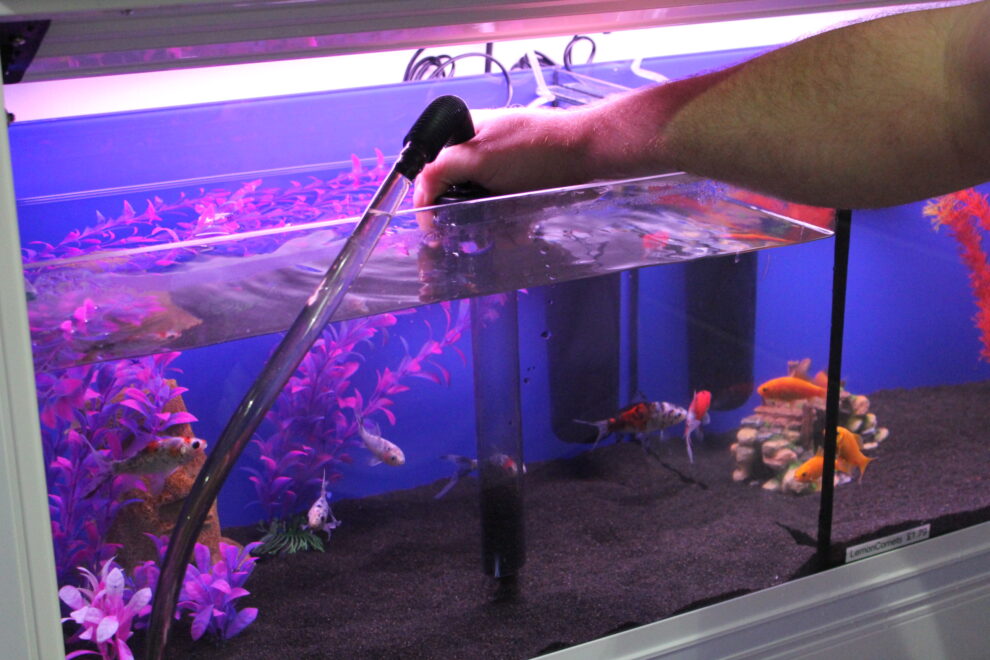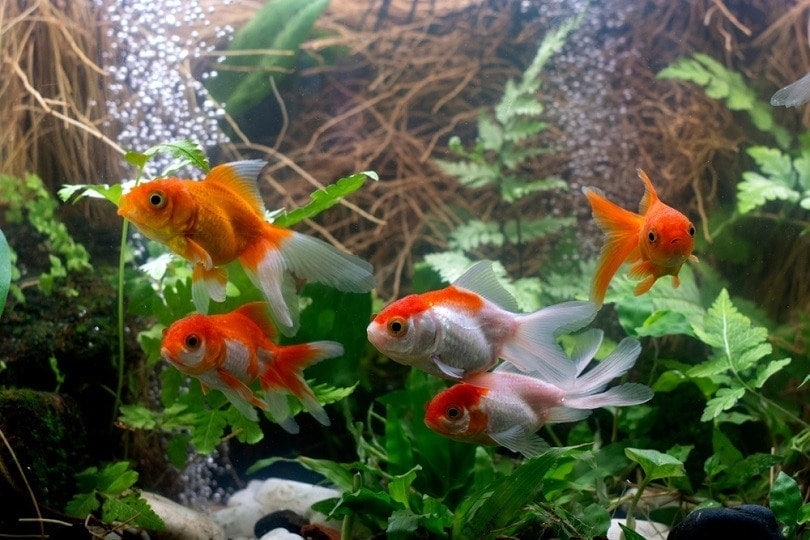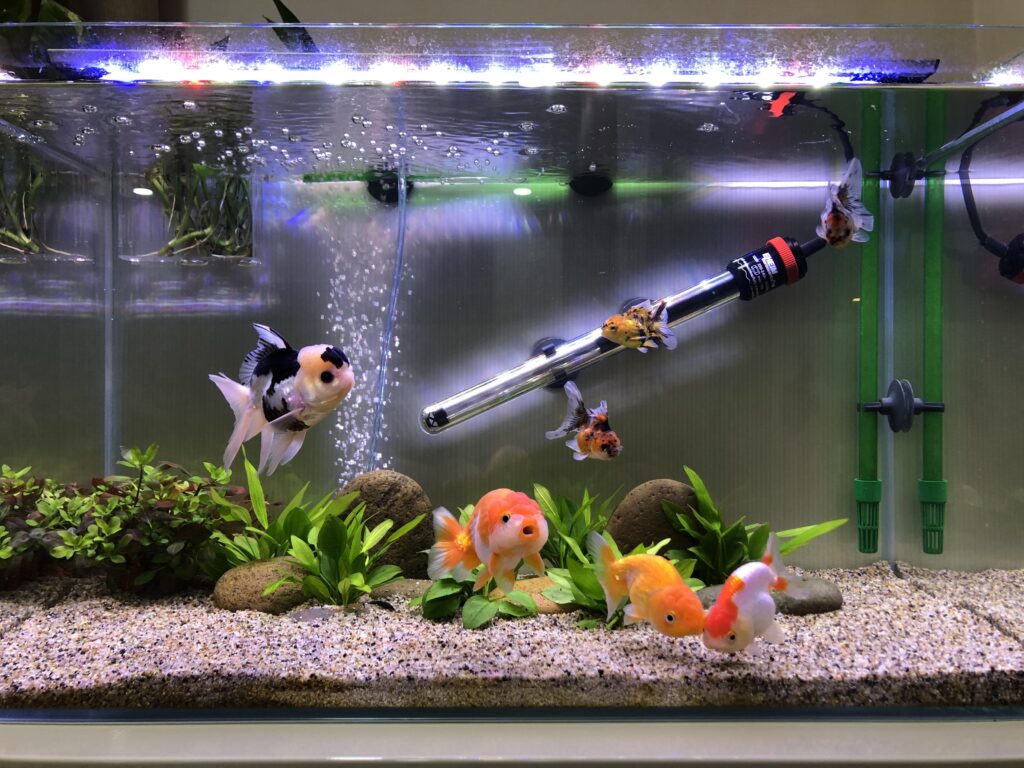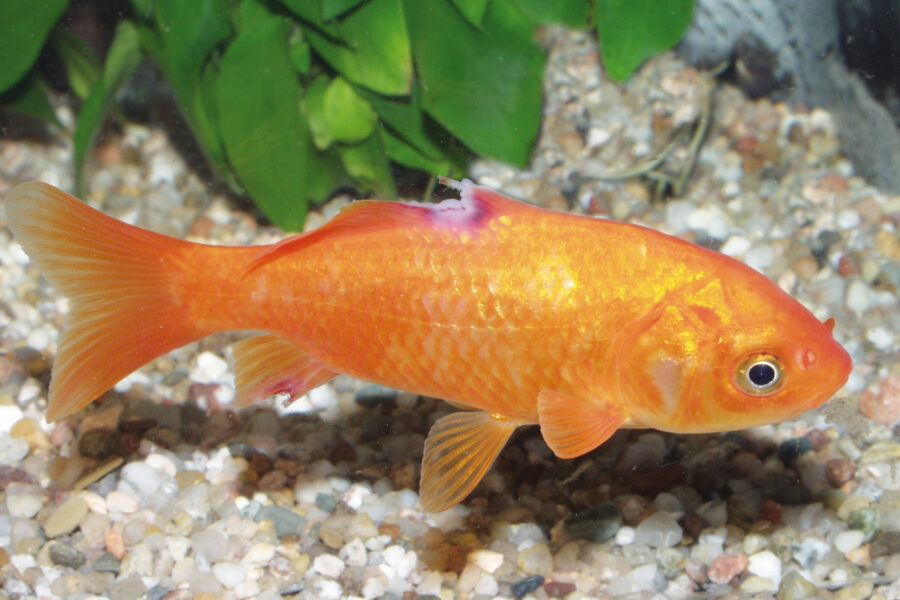
Hey there, budding aquarists and seasoned fish keepers! We all know that maintaining an aquarium is more than just sloshing some H2O in a tank and plonking in a few fish. It’s about understanding the slight art of balance, consistency, and an environmet where our underwater friends can thrive.
From the importance of regular water quality checks, to the art of perfect plant pruning, this guide will sail you through the process. We’ll also shed light on feeding schedules, equipment upkeep, and how to catch early signs of diseases or stress in your fish. Buckle up, grab your nets and dive in – we’re about to get our hands wet!
Understanding the Importance of Maintenance

Imagine this- It’s a Saturday afternoon, and you’re gazing at your beautifully planted aquarium. Suddenly, you spot a wilted plant or a fish that looks anything but lively. Yikes, right? That’s why routine maintenance is key.
The Significance of Aquarium Maintenance for Your Plant and Fish Health
Routine maintenance isn’t something we cooked just to add to your to-do list. It’s imperative for your water pets and plants. Fish thrive in clean waters. It discards harmful toxins and provides a balanced ecosystem for your underwater greenery. This preventative step can help avoid the onset of pesky pests and diseases.
How Neglect Can Lead to a Variety of Aquarium Problems
You can’t just set up the aquarium and pop in the little swimmers- that’s the stuff of nightmares, literally! Neglecting maintenance can lead to water impurities, hurtful bacteria, and – ready for a horror story? – algae bloom! Not to mention unhappy fish and unhealthy flora. And let’s be honest, ain’t no one got time for that complexity!
Before you sweat bullets at the mention of ‘maintenance’, it’s not rocket science. Taking small steps like monitoring water quality and keeping the tank clean can go a long way. After all, your aquarium is not just a decor piece, but it’s a thriving ecosystem that needs your attention. Next up, let me introduce you to one of the lifelines of this ecosystem – water quality!
Water Quality Checks

You’ve got your aquarium set up and running, with a school of radiant fish and a lush display of aquatic plants. But that’s just the beginning. Now we dive deep into the ocean of water quality checks.
Regular Testing of Water Parameters
Who said test tubes were only for the biology lab? Not in the world of aquarium maintenance! Remember, in a thriving aquatic ecosystem, balance is everything. Regular checks of pH, ammonia, and nitrate levels form the pillar of good aquarium upkeep. You’re essentially becoming the guardian of your own little aquatic universe, making these tests just as (if not more) important than high school chemistry exams!
How to Adjust pH, Temperature, and Hardness
Imagine being served piping hot coffee when you ordered an iced mocha. Uncomfortable, right? It’s the same with our aquatic friends. Different species prefer different living conditions like pH, temperature, and hardness. Knowing your fishes’ preference and how to adjust these levels is critical. From turning up the heater a tad to using additives for pH control—being a dedicated pet parent means creating a perfect environment for your underwater buddies.
Managing Nitrate and Ammonia Levels to Avoid Toxicity
Ammonia and nitrate levels are like nosy neighbors – they should be kept in check. By using a good quality test kit, observe the levels and ensure they aren’t creeping up to toxic levels. Equipped with the right knowledge, you’re now able to remediate and avoid unnecessary tolls on your aquarium’s vitality.
So, armed with your test kit and a newfound understanding of water chemistry, you’re ready to maintain the perfect aquatic harmony. But hold your seahorses, because the real fun is just beginning! Let’s move on to cleaning the aquarium – your very own underwater treasure!
Cleaning the Aquarium

Your fishes may not pick up after themselves, but don’t they make life interesting? Taking the time to clean their aquarium is crucial for their thriving health.
Regular Substrate Vacuuming and Its Importance
Look at the bottom of your aquarium. Those small pebbles or sand you see, yeah that’s substrate. But it’s not just there to make the tank look pretty, it’s also home to beneficial bacteria that help maintain your aquarium. Regular vacuuming can prevent waste buildup and maintain water quality. Imagine if you were swimming in your own waste. Not pretty, right? So, pull out that handy vacuum, and let’s get to work!
Avoiding Common Cleaning Mistakes
Now, cleaning your aquarium is not about scrubbing it within an inch of its life. Over-cleaning can wipe out essential bacteria that contribute to a healthy aquatic ecosystem. Avoid harsh cleaners and detergents. Instead, use all-natural aquarium products to keep your tank spotless. Avoid using hot water for cleaning as it can crack the glass. Remember, more isn’t always better!
The Importance of Cleaning Algae off Plants and Decor Regularly
You don’t let your bathroom turn into a green ghoul’s paradise with mold and algae sprouting everywhere, do you? The same principle applies to your aquarium. Algae, those green villains, can monopolize resources and suffocate your plants. Using an algae scraper or pad can keep this green menace in check. Remember, your aquarium should look like a beautiful underwater scene, not a scene from a swamp monster movie!
Alright, now that we’ve done the cleaning part, let’s get ready to observe our fish buddies, shall we? Your aquarium is now spotless, the decor is free from algae, and the substrate is as good as new. High five, fellow aquarist! It doesn’t end here, though. Monitoring your underwater pals’ food intake and behaviour is an essential aspect of keeping a healthy aquarium. So grab your fishfood, pull up a chair and let’s learn about observed feeding in the next section!
Feeding and Observing Your Fish

Every aquarium enthusiast knows the joy of feeding time. Those tiny aquatic critters darting around can sure pack an appetite! And while it’s easy to think of feeding as just tossing tiny confetti into the water, there’s actually more to it.
Why Feeding Schedules Matter
Food and time have a more intimate relationship than my last romance. By setting a feeding schedule, you give your fish routine. This not only keeps them in prime health but also avoids overfeeding, which can lead to weight issues or pose a risk to water quality. Conveniently, it might also keep the fish from scheduling a revolt against you.
In fish town, bedtime is a serious business. Stick to a schedule – it’s about as necessary as that morning coffee is for you. Regular feeding times will give you happy fish and a healthy aquarium. But hey, who said you can’t teach a fish the concept of brunch?
Observing Fish Behavior for Early Signs of Disease or Anxiety
Being a fish parent isn’t just about the food. It’s about keeping those peepers open for any funny business going down in your aquarium. After all, fish can’t exactly tap you on the shoulder and tell you they’re feeling unwell.
Look out for any changes in the way your fish are behaving. Are they swimming clumsily or hanging around the surface gasping for air? Maybe there’s less enthusiasm at feeding time or perhaps you’ve noticed unusual spots or discoloration on their bodies. These might be the fish version of a cry for help.
Remember, you are the Sherlock Holmes of your aquarium world. Master the art of observation and you’ll keep your fish aquatic and ecstatic.
Now that you’ve got feeding time and behavioral observation under your Sherlock hat, it’s time to dive into plant care. Are your pruning skills at the ready?
Plant Care and Pruning

It’s not all about your fishy friends when it comes to a thriving aquarium. Your leafy buddies need some attention too, and in this section, we’ll tell you exactly how to make your plants say “I’m looking FABULOUS” in fish-language. Let’s dive in with the first “watering” task.
Regular Check on Plant Growth
First things first. Are your plants growing? Because they definitely should be. Regularly checking your plant growth is essential so you can spot any healthy progress or concerning changes. Like spotting your grandma’s favorite flower in full bloom or that bizarre green stuff growing in your roommate’s leftover pizza – it is essential to keep an eye out.
How to Prune Your Plants Properly
Next, get ready for your new life as a marine hairstylist. Pruning your plants is more than just a snip-snip here and there. It’s about trimming the excess leaves to maintain healthy plant growth, and let’s be honest, avoid the look of a tiny plant jungle. Exactly how you’d want them if they were some fancy salon’s bonsai – neat and healthy!
Dealing with Common Plant Diseases and Pests
Finally, your plants can be a bit dramatic, catching diseases and attracting pests. Pest control in an aquarium is slightly trickier than squirting bug spray. But not to worry, identifying common issues and acting fast is the key – just like how you boot out unwelcome party crashers.
Alright, we’ve done an excellent job trimming and treating our underwater green mates. It’s now time to crack those knuckles and charge towards the next phase – Equipment Check and Maintenance. Yes, we’re looking at you, heaters and filters! Does anything sound more thrilling than that? So without further delay, let’s roll on.
Equipment Check and Maintenance

Pivot attention to another marquee point on our checklist, Equipment Check and Maintenance. This may sound techie and boring, but it’s like keeping up with your car’s oil changes. If we lose the gear, our planted aquarium can suddenly turn from a utopia to a dystopia for our aquatic pals.
Regular Checks on Heater, Filters, and Lights
Now, let’s talk specifics. Regularly checking your heater, filters, and lights is crucial. If the aquarium is a theater, these guys are your backstage crew. A fluctuating heater can transform your tank into a fishy sauna. Similarly, a clogged filter can make the water as murky as a grimy puddle. And without proper lighting, your plants might as well be in the basement.
Dealing with Common Equipment Malfunctions
Next up, how to deal with the malfunctions when these “tech-support” of the aquarium world throw a tantrum. Don’t panic. Let’s face it, mishaps happen, bad days are part of the program. The key is to catch these glitches early. Don’t go mad; just keep a spare part handy for quick fixes, such as an extra heater or a lamp.
When to Replace Aquarium Equipment
Lastly, knowing when to bid adieu to your old equipment and bring out the shiny, new replacements. Old can be gold, but not when it comes to your fish tank equipment. Look out for signs. A troublesome filter that’s causing more grief than relief? It’s a sign! A heater which is more “meh” than “yeah”? It’s a sign! Embrace change when needed, remember, you’re doing it for the fish and plants.
Well, now we have the equipment under control, let’s shift gears a bit. Our ultimate goal is a thriving aquatic garden, but what about spotting and dealing with the challenges that directly impact its key inhabitants – our vibrant, colorful fish? Stay tuned for the next section to dive deeper into that critical aspect.
Wrap Up
In conclusion, maintaining your aquatic kingdom involves several key aspects. Understanding the importance of regular maintenance is crucial not just to keep your aquarium looking great, but for your fish and plant’s health as well. Similarly, ongoing water quality checks, like testing water parameters, adjusting pH levels, and managing nitrate and ammonia levels, are critical in avoiding toxicity and creating a balanced environment for your aquatic life.
Cleaning the aquarium extends beyond a cursory swipe; it involves regular substrate vacuuming, getting rid of pesky algae and avoiding common cleaning mistakes. Observing your fish’s behavior and adhering to a feeding schedule can clue you in on early signs of disease or stress. Regular care and pruning of your plants prevent disease and encourage growth. Lastly, keeping an eye on your equipment, knowing common malfunctions and when to replace, goes a long way in ensuring a seamless aquatic experience for both you and your finned friends.
Frequently Asked Questions (FAQ)
Question: Why is regular aquarium maintenance important?
Answer: Regular maintenance ensures your fish and plants are healthy. Neglect can lead to various issues like untreated algae growth and unsuitable water parameters which can harm your aquarium’s inhabitants.
Question: How often should I test the water in my aquarium?
Answer: It’s crucial to test your aquarium’s water parameters weekly. This allows you to spot issues early and adjust pH, temperature, hardness, nitrate, and ammonia levels as needed.
Question: What common mistakes should I avoid when cleaning my aquarium?
Answer: Do not over-clean your aquarium as it can harm beneficial bacteria. Also, ensure you clean algae off your plants and decor regularly to prevent its overgrowth.
Question: How crucial is feeding schedule for my aquarium fish?
Answer: Regular feeding ensures your fish get the necessary nutrients. It also enables you to observe your fish for signs of diseases or stress daily.
Question: How do I deal with plant diseases in my aquarium?
Answer: Regular checks on plant growth helps spot signs of diseases early. Severe diseases might require treatment or removal of affected plants to prevent the disease from spreading.
Question: When should I replace my aquarium equipment?
Answer: It is vital to regularly check your equipment such as heaters, filters, and lights. Replace any malfunctioning equipment immediately to maintain a healthy environment in your aquarium.



